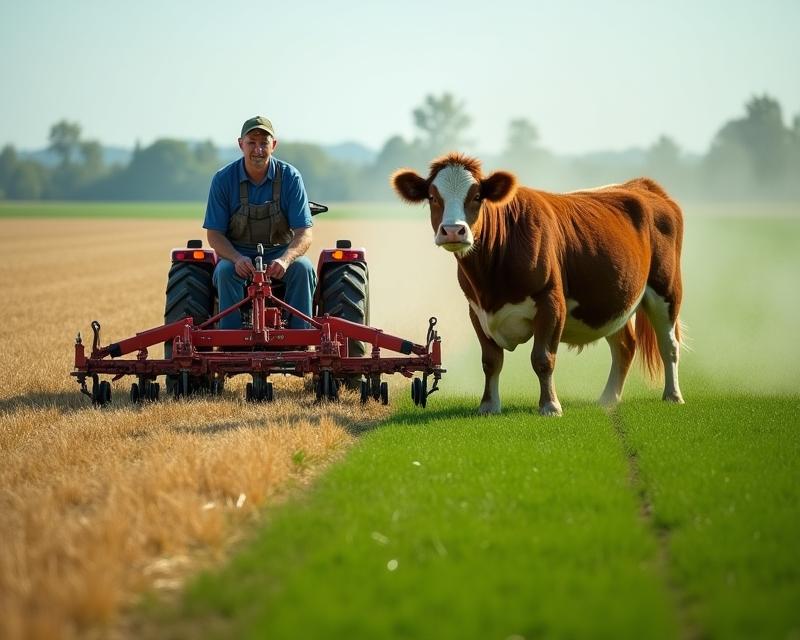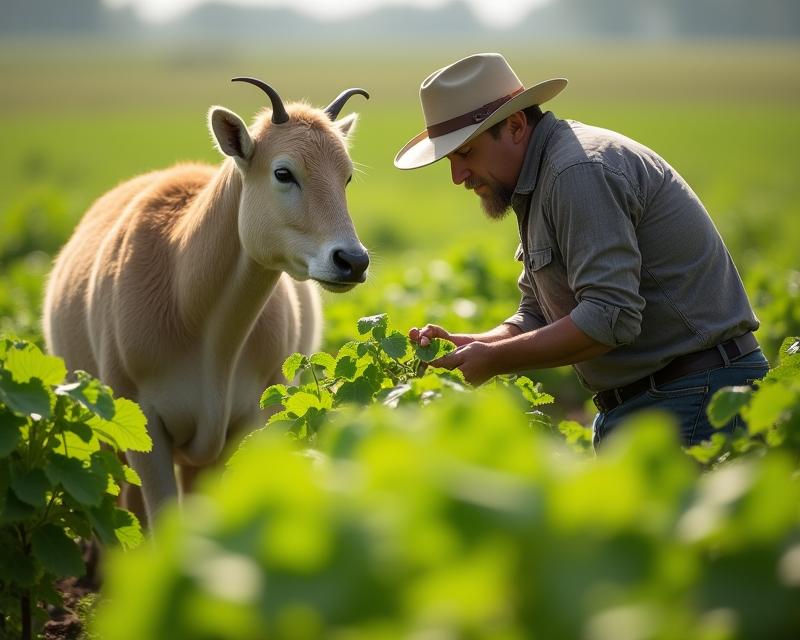Rejuvenating Pastures: A Guide to Overseeding
Publish in Sustainable Farming el 22/07/2025 16:21
Rejuvenating Pastures: A Guide to Overseeding
Old pastures can become depleted over time, leading to reduced productivity and impacting your livestock. But don't despair! Overseeding is a fantastic way to breathe new life into degraded fields and boost your farm's overall health. This article will walk you through the process, offering practical techniques to get your pastures thriving again.

Why Overseed?
Overseeding involves planting new grass seeds into an existing pasture. It's not just about adding more green; it's about improving the overall health and resilience of your pasture ecosystem. Degraded pastures often suffer from reduced grass density, poor soil health, and increased weed pressure. Overseeding can address all of these issues, leading to better forage production, improved soil structure, and enhanced livestock nutrition. A diverse pasture is a healthy pasture, and overseeding is a key tool for achieving that diversity.
Getting Started: Preparing the Ground
Before you even think about seeds, proper soil preparation is crucial. The first step is often harrowing. Harrowing breaks up soil compaction, creating a better seedbed for germination. A light harrowing is usually sufficient – you don't want to bury the soil too deeply. Next, consider drilling. A drill is a specialized piece of equipment that simultaneously tills the soil and plants the seeds at a consistent depth. This ensures even distribution and optimal seed-to-soil contact. If you don't have a drill, a broadcast spreader can work, but it requires careful calibration to avoid uneven coverage. Soil testing is highly recommended to determine if any nutrient deficiencies need to be addressed before planting. Correcting pH imbalances is also vital for optimal grass growth.
Managing Competition: Winning the Battle Against Weeds
Weeds can quickly outcompete newly planted grass, hindering their establishment. Pre-emergent herbicides can be used to control weed seeds before they germinate. However, consider the impact on your pasture ecosystem and choose herbicides carefully. Post-emergent herbicides can be used to target existing weeds, but again, use them judiciously. Maintaining a healthy, dense stand of grass is the best defense against weed invasion. Proper fertilization and irrigation will help your new grass establish quickly and outcompete unwanted plants. Regular monitoring and spot treatments can also be effective in managing weed populations.
Choosing the Right Seeds
Selecting the right grass species is essential for success. Consider your climate, soil type, and livestock needs. A mix of grass species often provides the best results, offering a variety of nutritional benefits and resilience to different conditions. Popular choices include perennial ryegrass, fescue, and bluegrass. Consult with your local agricultural extension office for recommendations on the best grass varieties for your region. Proper seed rate is also important; follow the recommendations on the seed bag to ensure adequate coverage.
Overseeding is an investment in the long-term health and productivity of your pasture. By following these steps, you can rejuvenate degraded fields and create a thriving ecosystem that benefits both your livestock and the environment. Don't hesitate to reach out to your local agricultural experts for personalized advice and support.





